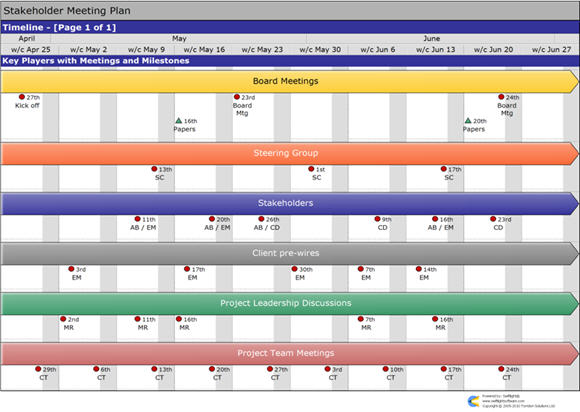Stakeholder Management Tips
Three Tips for Successful Stakeholder Management
Stakeholder Management - Some Tips
Have you ever been on a project which slowly drifted out of control? You knew the stakeholders were unhappy, you kept working harder and delivering more, but despite your best efforts the project ended in a nasty "train wreck"? Most of us have been there and it's never fun!
There are lots of reasons things slip out of control, but we are only going to address one here. Stakeholder management is widely regarded as an critical element in any project. Get it wrong - and things will likely become sticky. Get it right, and you will radically increase your chances of success. Here are three simple tips to help you keep on track.
Three Tips for Successful Stakeholder Management
1) Make Sure You Understand What the Key Client Stakeholder(s) Want. Really.
It should be obvious, but the number one cause of project failure is poor project scoping and lack of buy-in from all the stakeholders. If you don’t have a handle on this before the start of the project, or have an explicit plan to figure it out (and adapt the scope as needed), then there’s a good chance you will run into problems down the line.
So..make sure you know the basics. What are stakeholder(s) definitions of the problem the project is supposed to solve? What are their goals for the project, what concrete deliverables are they expecting and crucially, what would success look like? (And if stakeholders can't define these things with any certainty, then you'll have to help them get there, either before the start of the project, or as part of the project process!) The need for depth on this will vary by project, ranging from full blown specification documents to simple 1-2 page outlines, but whatever the project, it’s good to make it as specific as you can (remember SMART objectives?)
2) Assign a Team Member as Point of Contact for Each Stakeholder.
Whether it is you, someone on your team, or someone else, make sure that someone has explicit responsibility for helping manage each stakeholder: finding out what they want, keeping them briefed, and keeping the team briefed on how the stakeholders are feeling about the project. If you don't assign specific responsibilities, there's a risk that it will be "everyone's responsibility" and therefore no-one's.
3) Have a High Level Stakeholder Meeting Plan
This should be simple. Develop a high level meeting plan (like the one below) so that you can see when you will need to meet with the key people at or before critical points in the project. The last thing you want is to get to a big meeting and then get de-railed because someone wasn’t well briefed beforehand. Fortunately, a simple meeting plan like the one below can help you visualise what needs to happen by when and keep you on track..
Stakeholder Meeting Plan Example

See a larger version of this stakeholder meeting plan.
(Note: The above stakeholder meeting plan / communications plan available for Swiftlight trialists and customers to download and use as a template and edit/adapt etc as needed. (You need to have a working version of Swiftlight in order to open and work with this file). Click on the link to download a .zip file containing this stakeholder communications plan template.
Find Out More About Swiftlight?
- Visit our home page for more on Swiftlight project management software
- Register to download a free 30 day trial